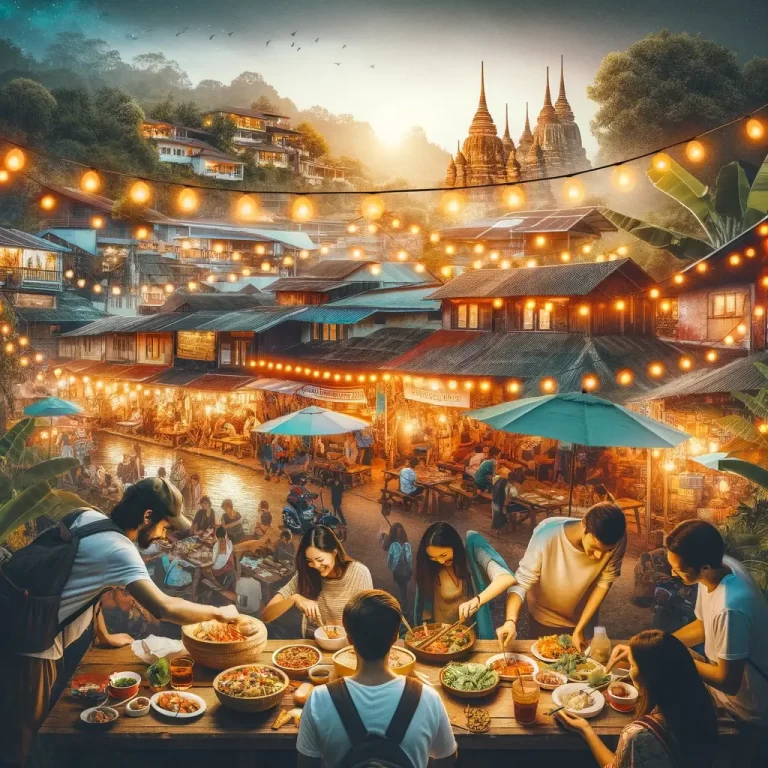Tracing the history of backpacking through the ages
Traveling with just a backpack and an insatiable appetite for adventure has been a defining experience for generations of wanderers. The **history of backpacking** is a tapestry woven with the threads of exploration, cultural exchange, and the relentless pursuit of freedom.
Early roots: From ancient explorers to the grand tour
The origins of backpacking can be traced back to ancient times when explorers like Ötzi the Iceman roamed the Earth with their belongings on their backs. This primal form of travel evolved over the centuries, becoming an educational rite of passage for young European aristocrats during the era of the Grand Tour. They traveled across the continent to absorb culture, art, and history, unknowingly setting the stage for the backpackers of today.
Those journeys were far from the accessible travel we know now; they were reserved for the elite, who could afford the luxury of time and money. However, they laid the groundwork for the democratization of travel, giving birth to what we now understand as tourism.
The Grand Tour has left us with an enduring legacy of cross-cultural immersion. This quest for knowledge and worldly understanding is a cornerstone of modern backpacking culture, echoing through the centuries as travelers continue to seek out experiences that challenge and change them.
The rise of modern backpacking
The modern concept of backpacking bloomed in the 20th century, born from a mix of mountaineering and societal shifts. In the 1950s and ’60s, as air travel became more accessible, young people especially found themselves drawn to the allure of distant lands and the promise of authentic experiences.
The period was marked by a profound yearning for personal growth and social change. Backpackers of this era embraced the freedom of the open road, often seeking out destinations that were off-the-beaten-path and rich in cultural diversity.
This era witnessed the burgeoning of backpacking tourism, with trailblazers venturing into unknown territories, mapping out routes that are still followed by contemporary adventurers. It was a time of exploration, not just of the world, but of the self, and it transformed travel into an emblem of independence and self-discovery.
The hippy trail and the counterculture movement
The iconic ‘Hippy Trail’ epitomizes the counterculture movement of the 1960s and ’70s. It was a pilgrimage of sorts for the youth of the day, a journey from Europe to the mystic lands of Asia, teeming with opportunities for enlightenment and escapism.
Backpackers traversed countries like Turkey, Iran, Afghanistan, and India, seeking out experiences that were radically different from their lives back home. It was a cultural exchange on an unprecedented scale, influencing music, fashion, and literature.
The Hippy Trail also marked the emergence of backpacking culture and its origins as a social phenomenon. It was during this time that backpacking began to be recognized not just as a mode of travel, but as a lifestyle choice that valued experience over material wealth.
Evolution of backpacking gear
The tools and equipment of backpacking have come a long way from the rudimentary packs of the past. Advances in technology and materials have led to the creation of lightweight, durable gear suited for all types of terrain and climates.
The late 20th century saw the introduction of ergonomic designs and specialized equipment, making backpacking more comfortable and accessible. This evolution has also been driven by a growing awareness of the environmental footprint of travel, prompting the design of eco-friendly gear.
From heavy canvas to ultralight synthetics, the backpacking gear history reflects not just changes in technology but also a shift in the mindset of travelers, who now prioritize sustainability and efficiency over luxury.
Popular backpacking destinations through the decades
As backpacking grew in popularity, so did the list of go-to destinations for intrepid travelers. Asia, with its rich tapestry of cultures and landscapes, has remained a perennial favorite, drawing backpackers with its promise of the exotic and the spiritual.
Through the decades, regions like Southeast Asia, with its beaches and temples, South America’s Andean trails, and Europe’s historical cities have topped the list of backpacking destinations.
These places have become not just stops on a journey, but integral parts of the backpacking narrative, each offering unique experiences that have shaped the ethos of backpacking culture.
Environmental consciousness: The leave-no-trace movement
The rise of environmental consciousness in the late 1980s and ’90s brought with it the Leave-No-Trace movement, reflecting a growing recognition of the impact of travel on the natural world. Backpackers embraced these principles, which call for minimal impact on the environment and respect for local communities and ecosystems.
This movement has become a key part of the backpacking ethos, emphasizing the importance of responsible tourism and the stewardship of the places that backpackers visit. It’s a commitment to preserving the beauty and integrity of the destinations that have given so much to the backpacking community.
The environmental impact of backpacking is a conversation that continues today, with a focus on sustainability and ethical travel practices that ensure future generations can enjoy the same transformative experiences.
Related Questions on the History of Backpacking
Who was the first backpacker?
While it’s difficult to pinpoint the first backpacker, we can look to ancient nomads and explorers like Ötzi the Iceman as early examples. These individuals traveled long distances with all their belongings on their backs, embodying the spirit of backpacking long before it had a name.
As travel evolved, so did the concept of backpacking, becoming a recognized form of tourism with the advent of the modern age. The term now encompasses a diverse community of travelers who share a common ethos of exploration and cultural immersion.
Where does the term backpacker come from?
The term “backpacker” originated from the simple practice of carrying one’s belongings in a backpack while traveling. It’s a straightforward concept that has grown to symbolize a low-cost, independent style of travel focused on flexibility and the discovery of new cultures and places.
Backpacking’s essence lies in the freedom of movement and the rejection of traditional, often more rigid, forms of tourism. It’s a word that has come to define a whole culture of travel.
Why is backpacking called backpacking?
Backpacking is so named because of the backpack itself—the quintessential symbol of self-sufficiency and adventure. It represents the ability to carry one’s life on their back, moving freely from place to place without the constraints of excess baggage.
This mode of travel emphasizes simplicity and adaptability, hallmarks of the backpacking experience that have attracted travelers seeking personal growth and connection with the world around them.
When was backpacking most popular?
The popularity of backpacking saw a significant surge in the 1960s and ’70s with the rise of the Hippy Trail and the counterculture movement. It was during this time that backpacking became associated with youth and rebellion, a symbol of the desire for an alternative way of life.
However, the appeal of backpacking has endured, with its popularity remaining strong into the 21st century. The continued evolution of backpacking reflects a timeless quest for adventure that resonates with each new generation of travelers.
Amidst the stories of adventurers past, let’s take a moment to look at a visual slice of backpacking history. This video captures the essence of why we venture into the unknown, with just a backpack as our companion.
As we lace up our boots and set our sights on the horizon, let’s remember the paths paved by the ancient explorers and the counterculture vagabonds. The history of backpacking is not just a chronicle of travel; it’s the story of humanity’s insatiable curiosity and the pursuit of a life less ordinary.
For you, the intrepid soul yearning for connection and uncharted territory, the journey is just beginning. Will you follow in the footsteps of the great wanderers, or will you carve out a new trail? Pack your bag, embrace the unknown, and join the legacy of travelers who have turned the world into their home.







